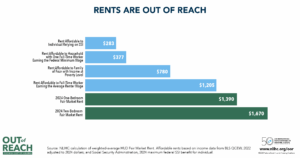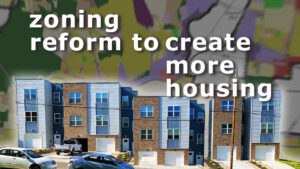When we think about the people who keep our cities running—teachers, police officers, firefighters, sanitation workers, and civil servants—we often forget one crucial detail: where do they live?
The irony is striking. Government workers are the backbone of public infrastructure and services, yet many of them are priced out of the very communities they serve. As housing costs continue to climb in urban and even suburban areas, it’s time for governments at all levels to address an uncomfortable reality: we must do more to ensure that our public workforce can afford to live where they work.

The Problem: High Rents, Modest Salaries
In many major cities, the cost of living has skyrocketed, driven by housing demand outpacing supply, wage stagnation, and speculative real estate markets. Government workers—who are often on fixed or modest incomes—face increasing difficulty finding affordable housing close to their jobs. Commutes grow longer, morale declines, and in some cases, departments face staffing shortages because potential hires simply can’t afford to live nearby.

Why It Matters
When a teacher has to drive two hours each way to get to school, or a police officer can’t afford rent within city limits, the impact is felt across the board. Long commutes increase burnout, decrease job satisfaction, and weaken community ties. If essential workers are priced out, cities become less resilient, less equitable, and less functional.
Housing for government employees isn’t just about fairness—it’s about public safety, service quality, and the health of entire communities.
What Can Be Done?
Solving the housing crisis for government workers requires bold, multi-pronged strategies. Here are a few:

1. Workforce Housing Initiatives
Governments can partner with developers to build housing specifically for public employees, often at below-market rates. Some cities have already begun converting unused public land into affordable developments for teachers, nurses, and emergency responders.

2. Down Payment Assistance Programs
Providing financial assistance or homebuying incentives for public workers can make home ownership more achievable. This also encourages long-term residency and investment in the community.

3. Zoning Reform
Easing zoning restrictions to allow for more affordable housing units—like duplexes, ADUs (accessory dwelling units), and mixed-use developments—can increase supply and lower costs. Public employees often benefit most from these more flexible housing options.

4. Rent Caps and Subsidies
Implementing rent control or offering rental subsidies for government workers can help keep housing costs manageable, especially in high-cost areas.

5. Public-Private Partnerships
By collaborating with private sector developers, governments can structure agreements that include housing for public servants as a condition of development permits or tax incentives.

A Matter of Values
Ultimately, how we house our government workers reflects our societal priorities. If we value public service, we must support those who provide it—not just with praise and platitudes, but with policies that offer real stability and opportunity.
Making housing affordable for government workers isn’t just a budget issue; it’s a moral one. These individuals commit their lives to serving others. It’s time we returned the favor by helping them find a place to call home.


